A large loud showy highly conspicuous bird with a striking white cap, which gleams like sunlit snow.
Meet the White-capped Tanager:
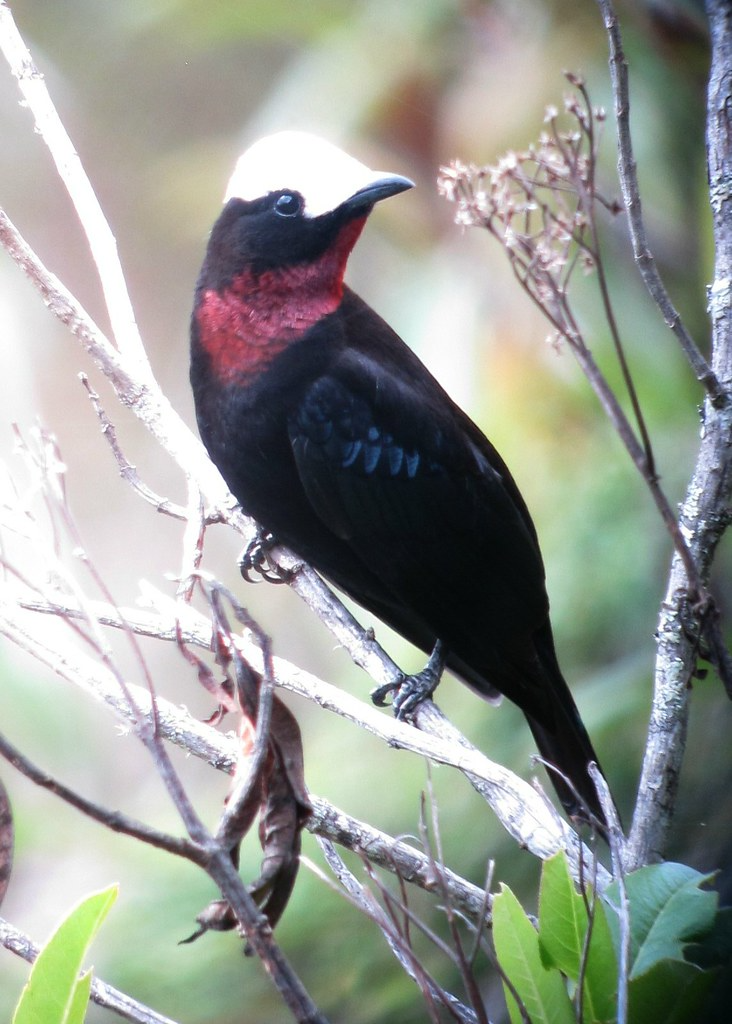
“Sericossypha albocristata / Pollo de monte / White-capped Tanager” by felixú is licensed under CC BY-SA 2.0.
Introduction: The White-capped Tanager (Sericossypha albocristata), a striking and unmistakable bird found in the northern Andes of South America, stands out with its large size and spectacular appearance. The male White-capped Tanager is a noteworthy member of the Thraupidae family, distinguished by its conspicuous white crown. Its glossy black plumage covers the entire body, except for the crimson chin, throat, and breast. The wings and tail are predominantly blue-black. , forecrown to mid-crown, creating a striking contrast with the surrounding black plumage. The sturdy bill is blackish, and its eyes are dark brown. Strong legs and feet are dark grey.
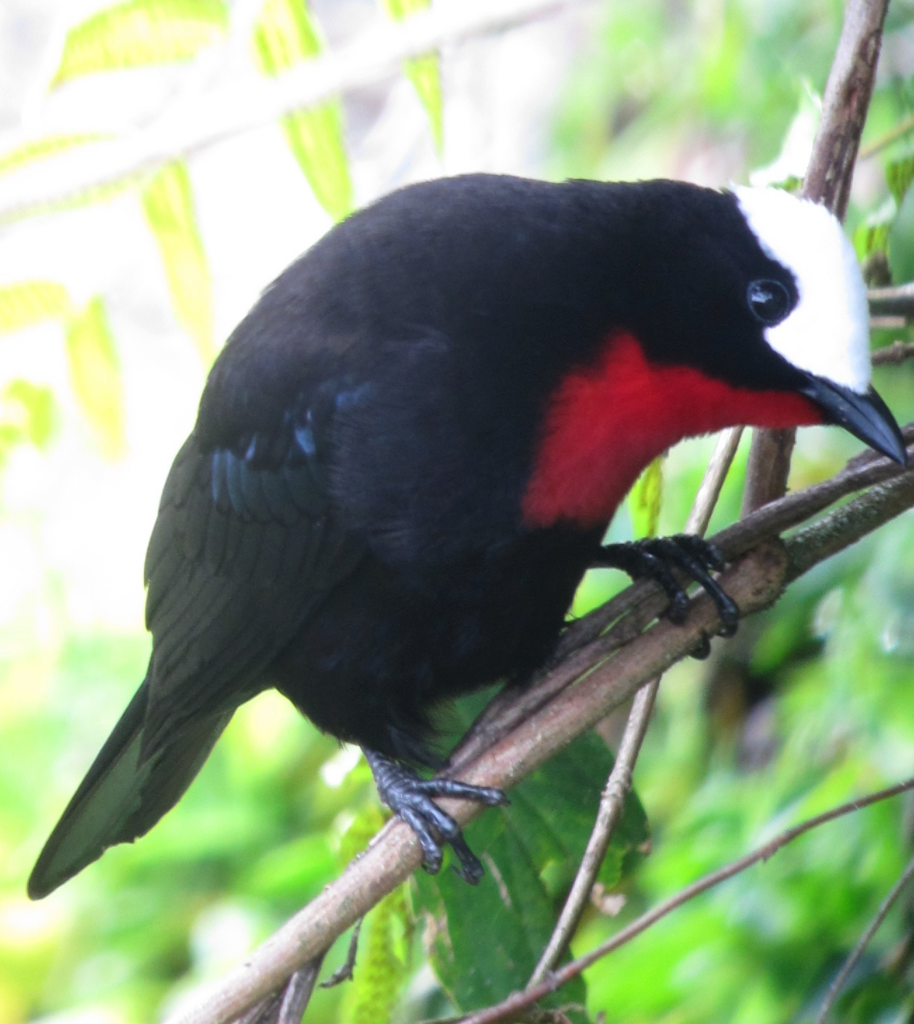
Photo Courtesy of Félix Uribe / CC BY-SA 2.0
Female Description: The female closely resembles the male, but the chin, throat, and breast are less extensive and display a duller and darker shade of red compared to the male’s vibrant hues.
Juvenile Description: Juveniles possess black plumage with a distinctive white crown already in place, but they lack the red coloration found in adult males and females.
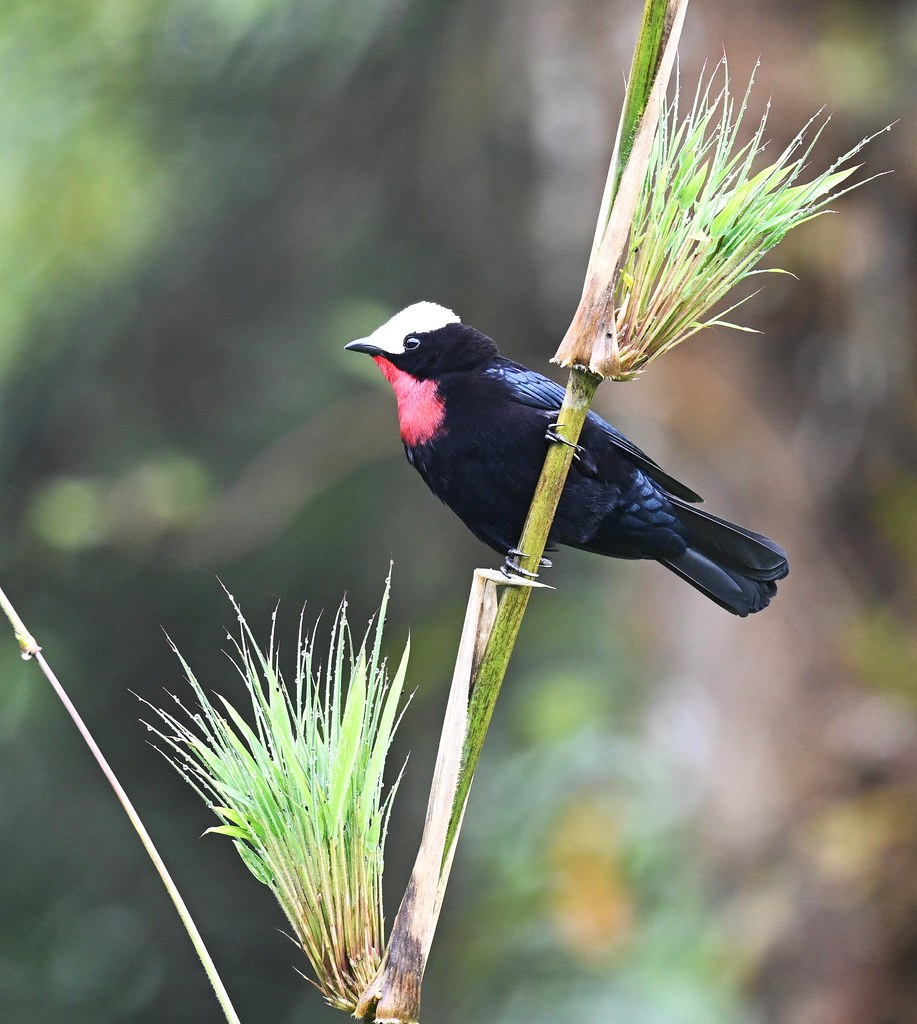
“White-capped Tanager” by Wildreturn is licensed under CC BY 2.0.
Range: The White-capped Tanager is found in Venezuela, Colombia, Ecuador, and Peru. Its distribution includes various regions, such as the eastern slope of the central Andes, upper Magdalena Valley, and eastern Andean slopes in Venezuela.
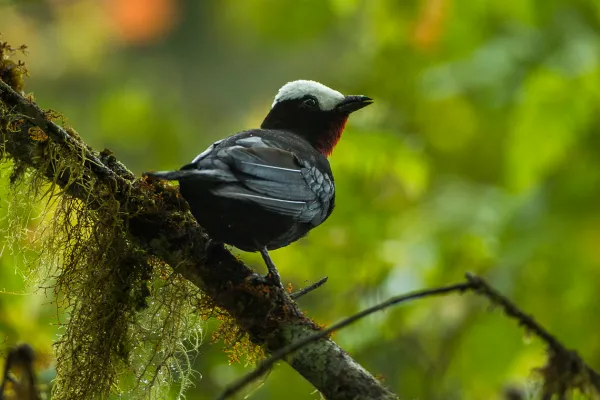
“White-capped Tanager – Colombia S4E3845 (22954514250)” by Francesco Veronesi from Italy is licensed under CC BY-SA 2.0.
Habitat: This tanager prefers humid forests and forest borders, with a particular affinity for higher, mossy forest areas as opposed to forest borders or tall second-growth areas. It is typically encountered at elevations ranging from 1,600 to 3,200 meters in Colombia, 1,750 to 3,000 meters in Ecuador, and 1,700 to 2,800 meters in Peru, with peak abundance between 1,900 and 2,700 meters above sea level.
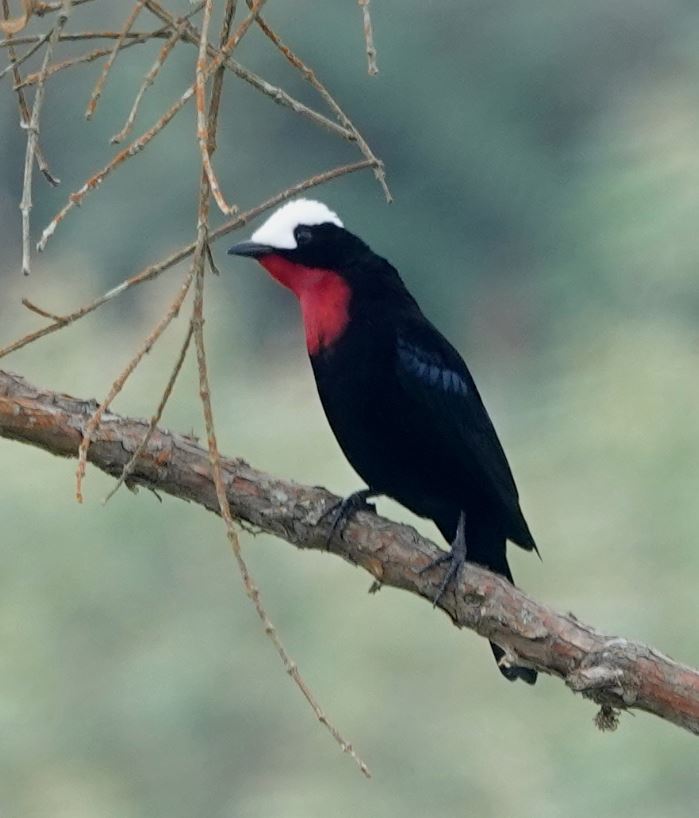
“tangara à coiffe blanche, tangara coroniblanca, white-capped tanager” by desertnaturalist is licensed under CC BY 4.0. (cropped)
Behavior in the Wild: The White-capped Tanager is believed to have an omnivorous diet, feeding on fruit pulp, seeds, ants, wasps, bees, and larvae of various insects. Its foraging behavior typically takes place in treetops, especially tall trees, or occasionally on top of bushes or second-growth vegetation. They often forage in groups, ranging from 4 to 8 individuals, although larger groups of up to 20 birds are not uncommon. Interestingly, these groups usually consist of a single adult male, likely representing family units. While foraging, they engage in various behaviors such as peering, posturing, tail cocking, hopping, leaping, and flying through the forest canopy.
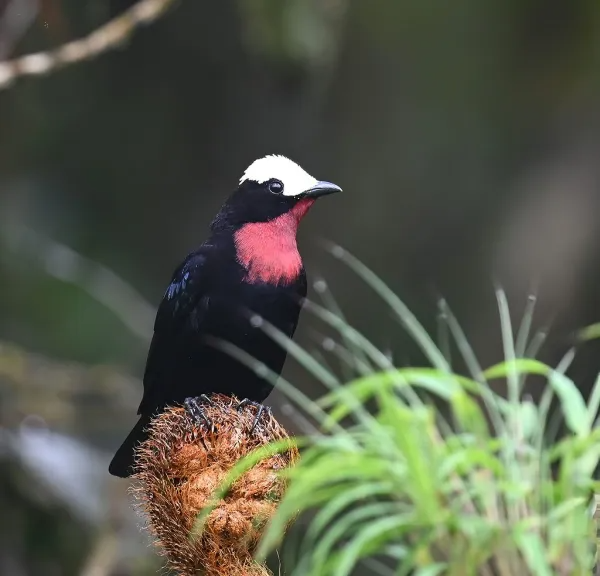
“White-capped Tanager” by Wildreturn is licensed under CC BY 2.0.
Reproduction: Although limited information is available regarding the breeding behavior of the White-capped Tanager, cooperative breeding is suspected. The white crown and red throat and breast likely play a role in courtship displays, especially when accentuated by specific postures. The cup-shaped nest is constructed in tree ferns and is well concealed by fronds.

“Sericossypha albocristata / Pollo de monte / White-capped Tanager” by felixú is licensed under CC BY-SA 2.0.
Calls and Songs: The White-capped Tanager is known for its frequent and noisy vocalizations, often heard before it is seen. Its call consists of a repeated loud “peeeaap,” sometimes followed by sharp, piercing notes like “keep,” “peer,” or “kip.” These calls can be uttered at a rapid pace, sometimes reaching up to 40 notes per minute or more. The calls are not only used for communication but also signal the approach of a group and are sometimes given during flight.
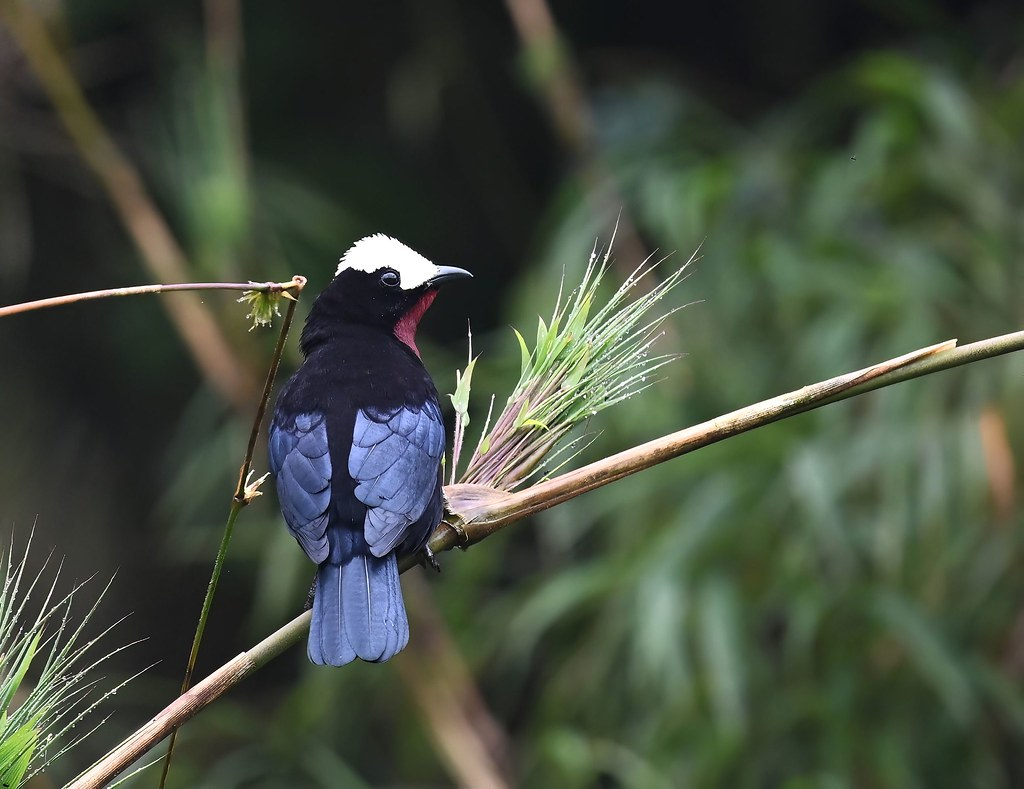
“White-capped Tanager” by Wildreturn is licensed under CC BY 2.0.
Protection/Threats/Status: The White-capped Tanager faces threats due to habitat loss caused by deforestation. While it is found in several protected areas within its range, the overall population size remains unknown. The species is described as “uncommon and patchily distributed” and is suspected to be in decline, leading to its current classification as Vulnerable.
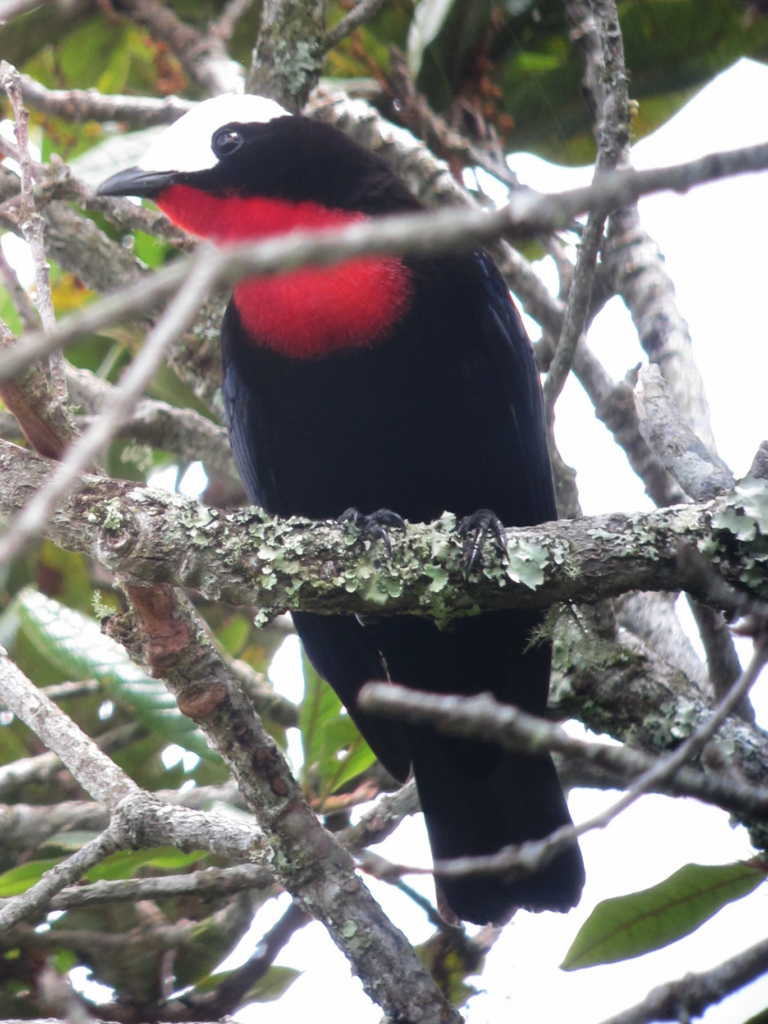
“File:Sericossypha albocristata Pollo de monte White-capped Tanager (11198228053).jpg” by Félix Uribe from Rionegro, Antioquia, Colombia is licensed under CC BY-SA 2.0.
Listen to this bird next:




